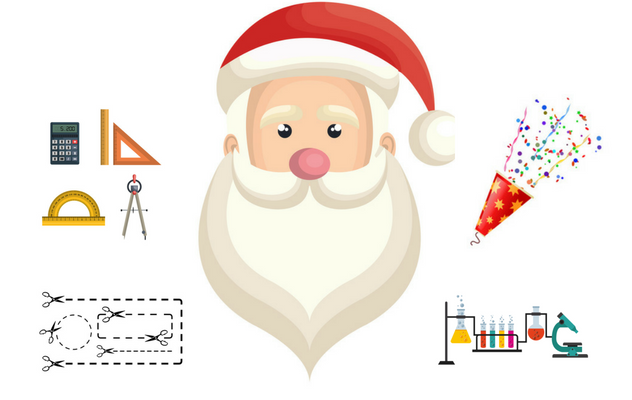
It’s that time of year again and as we hurtle towards the end of term, I have put together a few ideas to support learning in primary mathematics, science and design and technology in the run-up to Christmas:
1. Plan a class party
In this problem solving activity, children choose and carry out a range of calculations in order to plan a Christmas event. I’ve used it with Years 5 and 6, they really enjoyed being party planners! It is also a fun way of getting them to apply what they have learned in a real-life context. Following the planning, children designed posters to promote their party, which linked in nicely with work in English.
2. Design and make a party hat
No Christmas party is complete without a funny hat, get creative in designing the crowning glory of your party outfit. This is a lovely opportunity to explore different hat designs and get children thinking about how a design is linked to functionality. It also supports learning about design techniques such as printing and applique. I once used it as a project where children designed their own head dresses for an end of term carnival procession-children were very proud wearing costumes that they had designed and made themselves!
3. Making party food
Why not make all of your own food for the party, whilst thinking about healthy eating? The ‘Let’s Think through Science’ book provides a great thinking skills activity on sandwiches. This is an opportunity to develop systematic thinking about how many different combinations of sandwich there could be from three different types of bread, filling and extra, (lettuce, cucumber etc.).
When looking at traditional foods from around the world there’s no better place to start then with traditional mince pies. This activity, based originally on jam tarts, can be easily adapted for mince pies. It has gone down really well with various classes I’ve taught. Children carried out a survey on class preferences of different pies, designing the survey and representing data collected in a variety of ways. They really enjoyed designing and made their own mince pies, comparing them with the bought varieties and finding out which they liked the best.
4. Science Demonstrations
If you need entertainment for your party, how about making tinsel fly, liquidising jelly and watching a candle flame jump like magic? These short demonstrations promote interest and discussion around science concepts and get children thinking. Magic Melting Ice Cubes is perfect when learning about thermal conductors and insulators. Plastic feels warmer than metal, so many children may think that it will melt the ice cube quickly. Children are often surprised when they observe the ice cube melting faster on the metal surface than on the plastic!
5. Mathematics Ideas
Mathematics lessons in the final week of term are a great opportunity to practise skills learnt in the term using games and Christmas themed activities. Suitable for Early Years learners, this Christmas themed game encourages basic counting skills, as players race to the presents along an icy path.
Make pop-out Christmas cards based on a symmetrical design. They require concentration and a whole pile of assorted bits of old wrapping paper, sequins, pom poms, ribbons and, of course, glitter! I admit to having made the template for the ‘half a tree’, ‘pile of presents’ or snowman design in advance. This means children can draw around the shape on folded paper before cutting and revealing the symmetrical design.
For older learners, this pack of mathematics activities on a winter theme provides investigations, puzzles and games. These include: spotting patterns after creating a calendar from jigsaw, sort trees into a Venn diagram, puzzles and investigations using crackers, snowmen and paper chains. There is also a Christmas tree game fitting different mathematical shapes into a Christmas tree using hexagons to make Christmas tree patterns whilst digit trees help develop adding strategies.
6. Seasonal Science
An older resource with some great ideas! The Christmas section contains science challenges including: finding out which child wrote which letter to Santa using chromatography, identifying wrapped presents by thinking about the properties of materials, testing the strength and durability of wrapping paper and making Santa's nose flash.
Imagine if when the Christmas Lights were turned on they didn’t twinkle as usual, in fact the failed to come on…
In this activity children use dice to select several components of electrical circuits from an ‘advent calendar’ showing 24 electrical symbols. They then predict whether their circuit will work and explain their reasoning. A lovely activity to promote thinking and reasoning, children can then test out their circuit and find out what happens.
Holly is everywhere at Christmas and if you’ve ever drawn a leaf or made one from marzipan then you may be certain that it has seven prickles. But, does it? How can we investigate this and many other holly linked questions? If you manage to go outside to do this get the children to pick holly from different areas in a woodland and create a chart with them showing number of prickles. They can then tell you which is the most popular number from the sample they picked, but is this a fair sample? This resource provides lots of opportunities for working scientifically and developing mathematical skills all on a holly theme.
Please share any festive ideas of your own in the Christmas post on the primary resources group.
